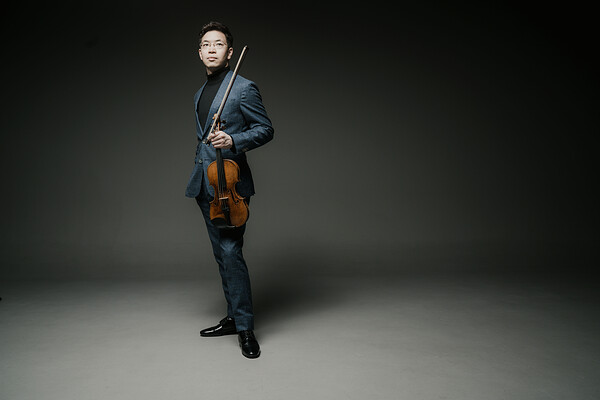Press
Review
Violinist Paul Huang with Camerata Pacifica

Paul Huang is truly a special violinist, and last Thursday I once again had the chance to enjoy his artistry at a recital at The Colburn School's Zipper Hall, as part of the Camerata Pacifica concert series.
Paul has been in the news lately - earlier this month he signed with Naïve Records as an exclusive recording artist, and his first recording with Naïve - of works by Saint-Saëns and Respighi - will be released in fall 2023.
Last week's recital illustrated a theme of dark followed by light - an appropriate feeling for mid-February, still stuck in winter but looking toward spring. Performing on the 1742 “ex-Wieniawski” Guarneri del Gesù that he has had on loan since 2012 from the Stradivari Society, Huang began with two works - Sergei Prokofiev's Sonata No. 1 for Violin and Piano in F minor and Alfred Schnittke's 1975 "Prelude in Memoriam Dimitri Shostakovich" - both which express despair and loss. The recital ended with Johannes Brahms' Clarinet Quartet, a late work awash in warmth, energy and Romanticism.
Playing with pianist Gilles Vonsattel, Huang achieved that delicate shimmer unique to Prokofiev's first violin sonata - the feeling of the wind blowing through the naked trees of winter, or across an empty graveyard. The stage was dressed for this feeling, too, with a large circular light projected behind the performers with criss-crossed shadows that seemed to turn the slim wooden beams of the stage wall into those winter trees.
Prokofiev's sonata projects a dark and ghostly beauty, with moments of fast filigree for the violin, and other moments vigorous, insistent, emphatic playing. Huang and Vonsattel were beautifully aligned when the music was parallel in both parts, and they played together like clockwork when the musical wheels spun in many directions. According to the program notes, the great violinist David Oistrakh played the first and third movements of this sonata at Prokofiev's 1953 funeral, which took place the context of such scarcity in the Soviet Union that no flowers could be found for the mere 15 mourners who attended Prokofiev's internment. The piece itself ended in such stillness and silence, it took some time for the audience to move from trance to applause.
Against the same backdrop, the Schnittke piece featured Huang as well as a second violinist, Jason Uyeyama, playing off stage, from the balcony. Written as a memorial to the Soviet composer Dimitri Shostakovich shortly after his death, the piece uses musical monographs representing both Shostakovich (DSCH) and J.S. Bach (BACH). While such compositional details are interesting, I still simply want to feel the music as sound.
Fortunately the piece works well - even without having to study the musical monographs. It begins with what sounds like a lone, pulsing note (which is both violins together) and evolves into more of an exchange or duet, with the plucking heartbeat of an open D string throughout.
With the Brahms came a change of scenery - the stage was now bathed in orange light, like a summer sunset. Uyeyama again joined Huang, along with violist Scott Lee, cellist Ani Aznavoorian and featured clarinetist, Jose Franch-Ballester.
This piece brought a great deal satisfying ensemble playing, with the pure tone and exceptional playing of clarinetist Franch-Ballester adding wonderful energy to the whole.